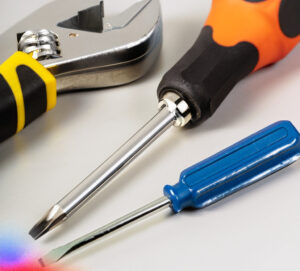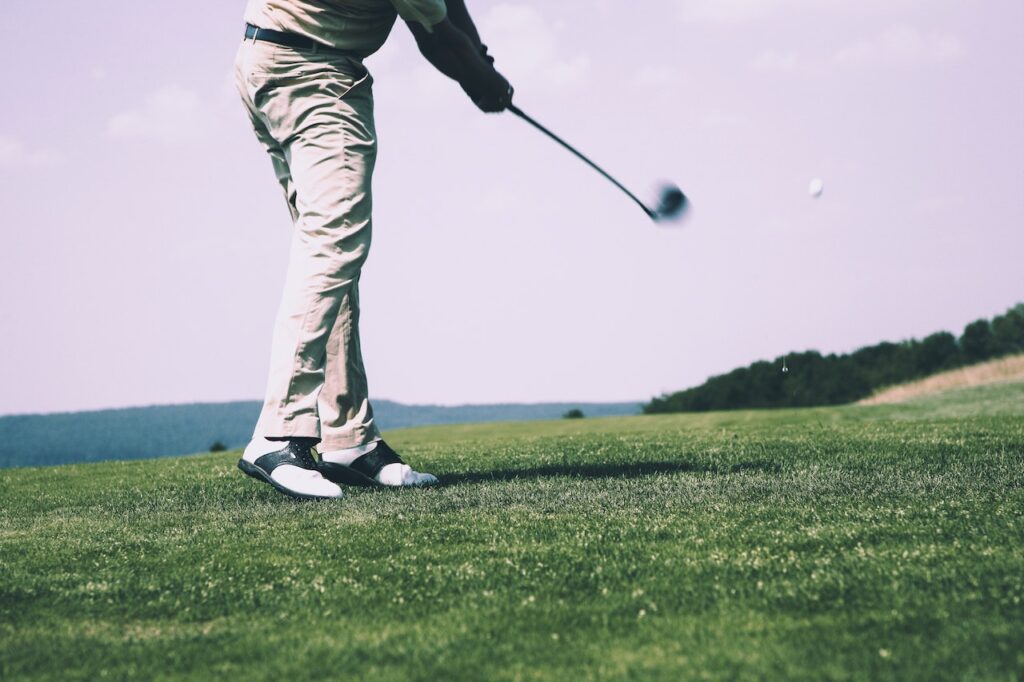Are you a passionate golfer aiming for that perfect putt? If so, investing some time in understanding and regularly changing the grip on your golf putter is essential. Here’s how you can do it accurately and without hassle.
Why changing the grip on a golf putter is important
Most golf pros would agree that the key to a successful, consistent putt lies in the grip. A good grip equals a good stroke. However, over time, even the best golf putter grips suffer from wear and tear. They lose their tackiness and the soft texture transforms into a hardened, slippery surface. Which is why changing your golf putter grip is crucial.
Step 1 – Choose your Grip: Choose a grip that feels comfortable and suits your playing style. Grips come in different sizes, shapes, materials, and textures – all influencing the feedback you get when you hold the putter.
Step 2 – Remove Old Grip: With the use of a grip solvent, carefully strip off your old grip.
Step 3 – Apply New Grip: Slather the inside of the new grip with the solvent and apply it over the putter.
Step 4 – Adjust and Align: Make sure to adjust and align the grip perfectly with the putter face.
Step 5 – Let it Dry: Now, let your golf putter rest for several hours before you hit the greens again.
And voila! Be ready to stun your fellow players with that sublime putt!
Tools and Materials Needed

If you’re an avid golfer, you know that the key to a good swing isn’t just in the shoulders – it’s in the grip too. A worn-out golf putter grip can mean the difference between a perfect putt and a disastrous bogey. Fortunately, changing a golf putter grip is a manageable task that you can undertake from the comfort of your home. But before you begin, let’s make sure you have everything you need at hand.
A list of all the items required for changing a golf putter grip
1. Replacement Grip: Ensure you have a new grip to switch out with the old one. Golf grips come in various sizes, so pick one that fits your hand size and feels comfortable.
2. Grip Solvent: This is used to lubricate the new grip and make it easier for it to slide onto the shaft.
3. Double-Sided Tape: This special tape is required to secure the new grip in place.
4. Hook Blade: You’ll need this to remove the old grip. Take care when using it to avoid damaging the shaft.
5. Vice and Rubber Vice Clamp: It firmly holds your golf club in place while you work on changing the grip.
Capturing all these items before the grip change process will make the job easier. However, remember that a high-quality replacement grip plays the most significant role. Pay attention to the grip’s texture, material, size, and how it fits your personal playstyle and comfort. Now, you’re all set for your comfort enhancement DIY task at home. Enjoy your game!
Removing the Old Grip

You might not realize it, but changing the grip on your golf putter can dramatically improve your game. A new grip can provide better traction, reducing the chance of the putter slipping out of your hands and helping you maintain control. However, before you can install a new grip, you have to remove the current one.
Step-by-step instructions on how to remove the current grip from a golf putter
- Secure Your Putter: To start, secure your golf putter in a vise. The shaft of the putter should be level with the ground – it helps you to pull the grip off evenly.
- Cut Off the Grip: Use a hook blade or utility knife to cut down the length of the grip. Be careful not to press too hard, or you could scratch or dent the shaft of your putter.
- Peel Off the Grip: Once you’ve cut the grip, you can go ahead and peel it off. It should come off easily, but if it’s stubborn, apply some heat using a hairdryer to loosen the glue.
- Clean the Shaft: Remove any residual tape or residue left on the shaft. An adhesive solvent can make this job easier and prepare the area for the new grip.
Remember, changing your putter grip periodically is crucial. Not only does it enhance your feel for the game, but it also allows you to maintain a light grip pressure that lets the putter head swing more freely. Once you have completely removed your old grip, you are now ready to replace it with a brand-new one!
Cleaning the Putter Shaft
Imagine the feeling, you’ve just swung your golf putter and it feels a bit off. Upon closer inspection, you realize the grip on your golf putter needs changing. Don’t worry, it’s not a herculean task. All you need to start with is a good, thorough cleaning of the putter shaft.
The importance of cleaning the putter shaft before installing a new grip
You might wonder why there’s a need to clean the putter shaft. Well, for starters, cleaning the putter shaft ensures that your new grip fits perfectly and doesn’t slip off when you swing. Over time, grime, debris, and moisture can accumulate on the shaft. These can prevent the new grip from adhering properly, thereby jeopardizing your control over the ball.
So, cleaning the putter shaft maximizes the life and performance of your new grip. Start by removing the old grip and tape. Be careful not to scratch the shaft while doing this. Next, get some grip solvent — it’s designed to break down and remove the leftover residue. Use a cloth to wipe the shaft clean, then leave it to dry thoroughly before installing your new grip.
Voila! You’re ready to move onto the next steps of changing the grip on your golf putter. Keep in mind that a maintained putter equals a precise swing and, hopefully, a lower score! Now you’re ready to hit the links with confidence.
Choosing the Right Grip
Venturing into the world of golf putters? Lucky you! One aspect that might need change is the grip. Modifying the grip on your golf putter isn’t as complicated as it seems, but let’s get you started on choosing the right one.
Factors to consider when selecting a new grip for a golf putter
1. Grip Size: This can influence your stroke heavily. Standard, midsize, oversize, or jumbo? You decide. Remember, too large can cause misses to the right, while too small might send the ball towards the left.
2. Grip Shape: Modern putters have a variety of shapes like flat front, round, and pistol grip. Test a few to see what suits your hand and stroke perfectly.
3. Grip Material: Pay attention to the material of the grip. Soft materials might feel more comfortable, but harder grips can give you a better feel for the head of the putter.
4. Personal Preference: Ultimately, the best putter grip for you is the one that makes you feel the most comfortable and confident when you hold it.
5. Weather Conditions: Climate and weather conditions can affect performance. Using corded or wrapped style grips can offer better traction in wet conditions.
Therefore, examine each of these points carefully when selecting a new grip for your putter. This will enhance your control on the green, increasing the chances of sinking that all-important putt. Good luck! Happy golfing!
Installing the New Grip
Golf experts would agree that the grip is an essential part of a thriving game. After realizing this, you may decide to change the grip on your golf putter. The good news is it’s easy, and you can do that yourself in as few as five steps.
Step-by-step guide on how to properly install a new grip on a golf putter
Step 1: First, use a blade or grip removal tool to cut off the old grip carefully. Make sure to be cautious not to damage your shaft. And then, remove the old tape from the shaft.
Step 2: Now, wrap a double-sided golf grip tape around the shaft where your new grip will be located. And at the end of the shaft, leave about half an inch of the tape hanging off.
Step 3: The next step is to wet the tape using grip solvent. This way, the tape becomes slick, and it becomes easy to slide the new grip on.
Step 4: With the grip’s small hole covered, you’ll want to pour some solvent into it. Shake it around, then pour it over the tape to fully activate the adhesive.
Step 5: It’s time to slide the grip onto your golf club. Push it firmly over the top of the shaft until it’s on fully. Make sure it’s straight, and then leave it to dry for a few hours.
Here’s your achievement! You have just successfully installed a new grip on your golf putter with these five steps. Keep those grips fresh, and your performance on the course is sure to improve.
Proper Alignment and Positioning

As an enthusiastic golfer, changing your golf putter’s grip is an excellent move to significantly enhance your performance on the green. However, installing a new grip is not enough, your goal should be optimal alignment and positioning.
Tips on aligning and positioning the newly installed golf putter grip for optimal performance
Firstly, you need to check the alignment of your grip to the clubface. Your new grip should be precisely fixed to the centerline of the clubhead to ensure optimal putting. Slip the new grip onto the shaft, aligning it perfectly with the flat side of the putter face for accuracy.
Then, focus on positioning. Hold your putter in a comfortable and relaxed manner, ensuring ease of control and movement. The putter’s grip should feel natural in your hands, and your fingers should wrap around it just right.
Remember, your new grip will only make a difference if properly aligned and positioned. Constant readjustment might be needed until you find your perfect fit. Don’t hesitate to practice good grip techniques until your swing feels just right. As golf is a game of precision, the more comfortable you get with your new grip, the better your performance will be on the golf course.
The table below offers a quick recap of what you need to do:
| Steps | Explanation |
|---|---|
| Check alignment | The grip should be fixed to the centerline of the clubhead for optimal accuracy. |
| Focus on positioning | Hold the putter comfortably and ensure the grip feels natural in your fingers. |
| Practice and readjust | Adjust and practice with the new grip until your swing feels just right. |
It’s golfing time! Pull on your golf gloves, grab your putter and head to the lush green fields to try out your newly gripped friend! Enjoy the game!
Maintaining the Grip
Your golf putter has got to feel right in your hands. The grip plays a core role in controlling your overall swing action. As an enthusiastic golfer, you would not want the handle peeling off or feeling slippery halfway through the game. Therefore, it’s critical that you know how to maintain your grip and extend its lifespan, ensuring your performance is not compromised.
Advice on how to care for and maintain the new grip to prolong its lifespan
Keeping your clubhole clean: Regularly, you need to get rid of any dirt or particles from the clubhole. A quick shake or by using a brush can do the trick.
Regular wiping: After every game or practice session, ensure to wipe down your grips with a damp cloth and dry them thoroughly. This not only keeps your grip clean but also reduces wear and tear due to sweat or moisture.
Avoid harsh cleaning agents: When cleaning, avoid using products that dry out the grip, as this can lead to its degradation. Warm water is usually the best cleaning agent for your golf grips.
Regular inspection: Checking your grips regularly for signs of wear or damage is highly advised. Areas that show signs of wear, such as cracks or faded colors, can help you pinpoint when it’s time to replace your grip again.
Remember, a nicely maintained grip is vital for a successful swing. So, take good care of your golf grip and maximize your game performance!
Frequently Asked Questions
When it comes to enhancing your golf game, paying keen attention to the little details like changing your putter grip can bring about a big difference. This part may seem quite minor, but it plays a critical role in your swing and the overall success of your game. So, let’s delve into the details.
Answers to common queries about changing golf putter grips
When should you change the putter grip?
Typically, your putter grip should last a year if you’re a regular golfer. However, signs of wear and tear like cracks and hard spots mean it’s time for a replacement.
What will you need to change the putter grip?
Ready to make the change? All you’ll need is a new grip, grip tape, grip solvent and a utility knife.
What’s the proper technique to change the putter grip?
Start by using a utility knife to cut off the old grip. Then, you’ll apply the grip tape onto the shaft of the putter. After that, you’ll use the grip solvent to activate the grip tape. Finally, you’ll slide the new grip over the end of the shaft.
Are there any tips to make this process easier?
Absolutely! Make sure the alignment of your grip is correct before it dries. It’s also prudent to use a vise to securely hold the club while you work. Always remember – an improperly installed grip can negatively impact your game.
Conclusion – how to change the grip on a golf putter
Changing a golf putter grip to a new and more comfortable one can have a massive impact on your game. Let’s decipher the process, shall we?
The importance of having a comfortable and well-maintained grip on a golf putter.
If you’re an avid golfer, your putter grip’s condition probably means a lot to you. An uncomfortable or deteriorated grip may hinder your performance. Here’s a step-by-step guide on changing the grip on your golf putter.
Step 1: Initial Preparation: Gather all the necessary tools: a new putter grip, double-sided grip tape, grip solvent, a utility knife, and a clamp.
Step 2: Remove the Old Grip: Use your utility knife to strip off the old grip. Just slit along the length of the grip and peel it off.
Step 3: Apply New Tape: Remove the old tape residue from the shaft. Apply new double-sided grip tape onto the cleaned shaft.
Step 4: Apply Solvent: The solvent will help the grip slide onto the shaft smoothly. Pour it over the tape.
Step 5: Install New Grip: Align the grip correctly and simply slide it onto the shaft.
Step 6: Let it Dry: Allow it to dry for a few hours before you hit the golf course again.
With a fresh grip on your golf putter, you’re ready to reach new heights in your golf game. It’s a quick process that can vastly improve your comfort and performance on the green.

I’m Donna Weiss, and I am the proud writer behind the captivating content you’ll find on golfneedy.com. As an avid golfer and passionate writer, I have combined my two greatest passions to bring you an incredible golfing experience. Through my articles, I aim to provide you with valuable insights, equipment reviews, and updates on the latest tournaments. Whether you’re a seasoned golfer or just starting out on this exciting journey, I am here to guide you and share my expertise. Together, let’s explore the fascinating world of golf, uncovering new techniques, and enhancing our skills. Join me on this thrilling adventure as we elevate our game and embark on an exciting golfing journey. Read More



